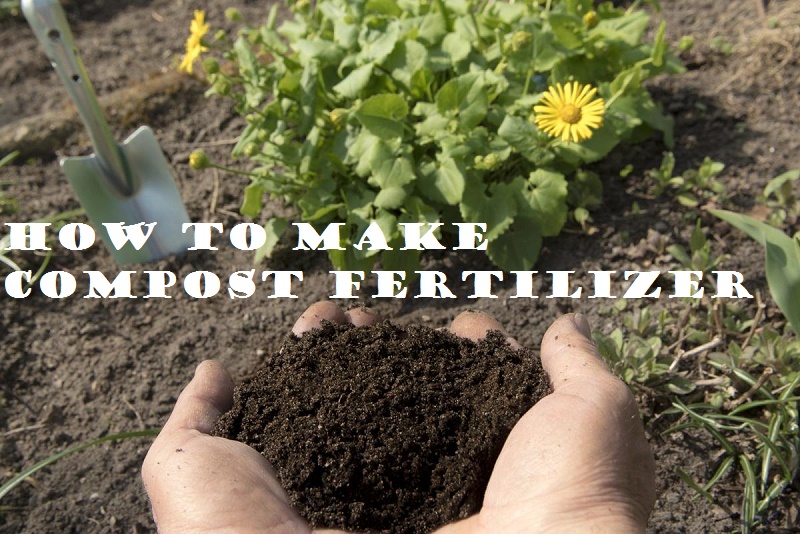What is Compost? Compost is a type of earth made from organic waste. It is obtained from a process called composting, in which microorganisms decompose organic matter to form earth. The compost is a land of excellent quality, planting your plants in compost you have very low chances that your plant fails due to this issue. Here, we’ll show how to make compost yourself.
The compost also serves as a natural fertilizer for your plants, since it is a product very rich in nutrients. The compost helps the earth to aerate better and maintain humidity. Due to the high temperatures that occur in its manufacture, the seeds of weeds disappear, leaving a pure land. Before starting the process read the gardening mistakes. It will keep you safe from time and money loss.
Many times it acts as a bactericide and fungicide, being that it does not contain any type of chemical. It is not necessary to buy this product since you can easily do it in your home. Making compost helps reduce the amount of garbage that reaches landfills, and you contribute with recycling.
How to make compost fertilizer
The composter is the physical place where you will make your compost, you can make it yourself with recycled materials or buy it made. To make a compost you need a container of the right size for the space you have available. It is important that the container has the following characteristics:
- Side ventilation system to allow oxygen to enter.
- Easy opening and handling (that has a lid on top to be able to enter the waste)
If you have access to the garden, you must leave the base of the composter in contact with the ground, to allow the entry of air and access to the organisms that inhabit the ground and take care of the decomposition of the materials. If you live in the apartment or do not have where to put the composter in contact with the ground, we recommend that you insert about 3 cm of fertile soil at the base of your container before the layer of branches or straw.
Here is a link to how to make gardens in fruit boxes. If you put a lid on these same drawers, you have a good container to make a composter with recycled materials, especially for a small space.
Materials to use in the compost
Materials to make compost – To obtain a good compost you must use, in the minimum time, a great variety of materials, as crushed as possible. The more crushed they are, the faster you will get the compost. All the material you use must be organic. It is very important that you mix materials of rapid decomposition with those of slow decomposition. Below you will find a list to guide you:
Rapidly decomposing materials:
- Fresh leaves
- Remains of grass
- Manure from farmyard animals
- Young weeds
- Slow decomposition materials:
- Pieces of fruit and vegetables
- Bags of infusions and coffee remains
- Straw and old hay
- Remains of plants
- Strawweeds (horses, donkeys and cows)
- Old flowers and pot plants
- Clearing of young hedges
- Perennial Weeds
- Hamster beds, rabbits and other domestic animals (herbivores)
Very slow decomposition:
- Autumn leaves
- Hard hedge clearings
- Pruned branches
- Sawdust and shavings of untreated wood
- Eggshells
- Nutshells
- Wool and natural threads
- Hairs and feathers
- Fruit bones (peach, avocado, olives, etc.)
Other materials that can be used:
- Wood ash (sprinkle in small amounts)
- Cardboard, egg cartons, napkins bags, and paper containers
- Newspapers (in small quantities)
Avoid:
- Meat and fish
- Products derived from milk
- Products containing yeasts or fats
- Do not use for any reason:
- Coal and coke ash
- Cat and dog feces
- Disposable diapers
- Illustrated magazines
- Vacuum cleaner
- Cigarette filters
- Synthetic fabrics
Composting methods
First, you have to make a layer of straw or branches or any other material that allows the air to circulate and does not crush easily. This layer should be about 20 cm and you should put it at the base of the composter, in contact with the ground, this will also allow organisms to enter more easily. Remember that if you do not have access to put your composter in contact with the earth, before making this layer of straw or branches, you must put a layer of at least 3 cm of good soil and on it, the layer of straw or branches.
Introduce the remains of organic materials always taking into account that materials of quick and slow composition must be mixed. Remember also that they must be as crushed as possible. The first time you make your compost, you must fill at least half of the composter with the materials. It is also advisable that each time you vote your waste, put a layer of dry leaves on top.
You must ensure that your composter is always wet. The ratio between wet materials and dry materials is 2/1. To control the humidity you must constantly observe that the material is moist but that it does not release liquid. Every time you introduce your waste, you must mix it with the old material, leaves or straw. This will also help to prevent the appearance of the fruit fly, which turns out to be very annoying.
How to take care of prepared compost
It is very important that the compost is well aerated, that is, the more we move the materials that are inside, we avoid rotting and favor the microorganisms that are performing the decomposition process. Then recommendation always mixes the new materials with the old ones, and from time to time, turns all the materials of the composter.
Check that the humidity is homogeneous throughout the container. If there is a lack of moisture, you should water the compost, not with too much water, only until it gets wet.
In summer, I hope to put your partner in the shade, and in the winter leave it covered, (always with air intakes) to conserve heat. If it’s complicated for you, do not be a problem. The compost will continue to be made, but the process will be slower.
If you have access to herbivore manure, we recommend that you put it on a regular basis in a small amount.
Completion of the composting method
The compost can be used for different things depending on its stage of maturation.
Fresh Compost:
It is distinguished because it still has material without decomposing. It is used as protection to changes in temperature and humidity in plants. Especially against frost. It improves the soil and prevents weeds from appearing.
Mature Compost:
It takes approximately 5 to 6 months in the composter. It is distinguished because all the materials have decomposed, except for some remains of materials that are difficult to decompose, such as egg shells or branches. It is dark and earthy in color. It is used as land for planting or as fertilizer, having multiple benefits that we mentioned in the beginning.
Well, we hope that after this post, you will be encouraged to make your composters and have your own compost at home. And See! Do not stop filling your composter with the material, as it shrinks during the process.









Average Rating